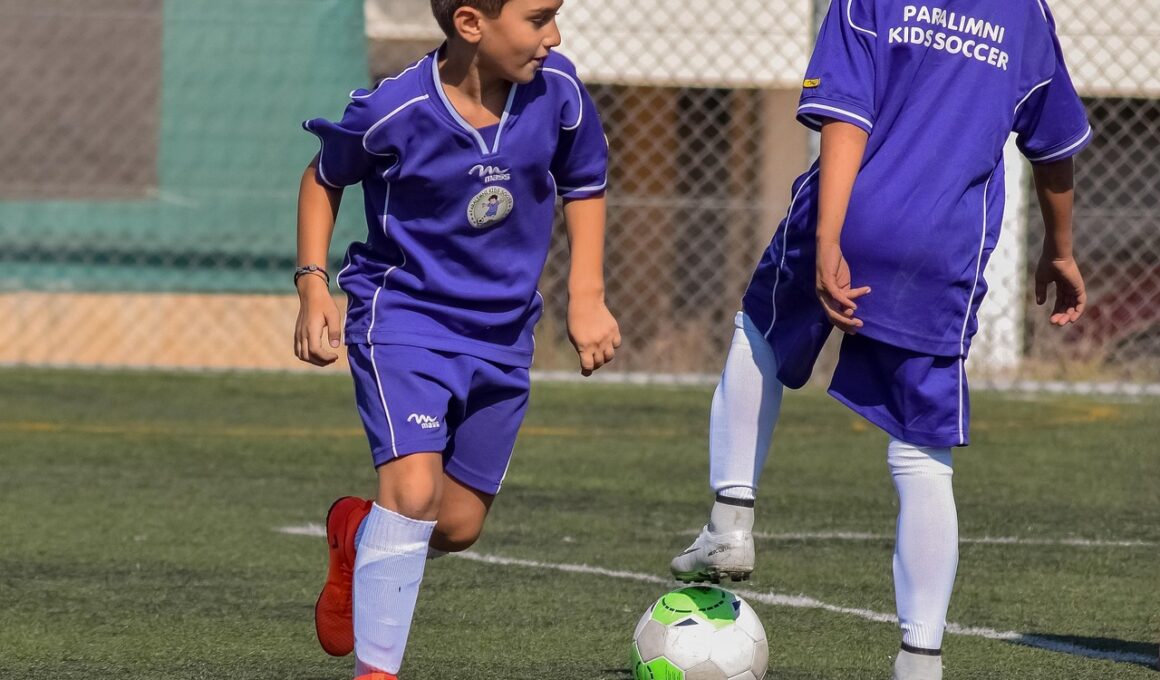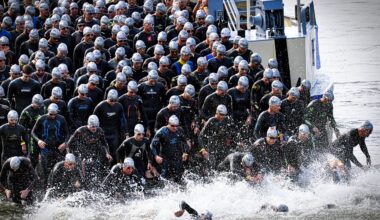A Parent’s Guide to Outdoor Exercise for Children
Engaging children in outdoor workouts is essential for their physical and mental well-being. It fosters a love for activity and develops healthy habits early in life. Parents should create opportunities for physical play, ensuring it’s fun and enjoyable. Outdoor exercises can vary widely, appealing to different interests and capabilities. Activities may include running, jumping, or even structured games like tag and soccer, encouraging teamwork and social interaction. Parents can introduce simple exercises that children can perform, such as jumping jacks, hula hooping, or cycling, depending on their age and ability level. Providing proper gear and clothing is important, ensuring that children are dressed appropriately for outside temperatures and weather conditions. Additionally, ensuring safety is paramount when organizing outdoor activities. Seeking safe, spacious areas for play offers reassurance, reducing risks of injury. The more kids see adults being active, the higher the likelihood of them participating in outdoor workouts. They will often emulate these behaviors, reinforcing a culture of fitness. Well-structured outdoor play can contribute positively to a child’s overall development and provide a strong foundation for lifelong physical activity.
Benefits of Outdoor Workouts
Outdoor workouts present numerous advantages for children, especially when compared to indoor activities. Exposure to natural sunlight boosts vitamin D levels, contributing to healthier bones and immune systems. Furthermore, spending time outdoors can enhance mood and reduce feelings of anxiety and stress. By engaging in outdoor exercise, children can explore their environment, which fosters creativity and curiosity. Group workouts or sports can teach children valuable social skills such as teamwork, sharing, and sportsmanship. Emotional growth often takes place during outdoor activities, as children face challenges while playing, learning resilience and problem-solving skills. Implementing a routine that includes diverse outdoor activities can keep kids engaged and interested. It’s vital to keep routines varied and appealing to maintain their enthusiasm. Setting achievable goals can also motivate children, whether it’s mastering a particular sport or improving overall stamina. Parents are encouraged to join their children in outdoor exercises, promoting a supportive family environment. This bonding time not only strengthens relationships but also reinforces healthy habits. Therefore, outdoor workouts provide physical, emotional, and social benefits that are essential for children’s holistic development.
Creating an engaging and exciting atmosphere can significantly influence children’s willingness to participate in outdoor workouts. Parents can organize themed exercise days or encourage outdoor treasure hunts, turning a simple workout into an adventure. Tools such as jump ropes, frisbees, or balls can create fun routes for exploration and exercise. Hosting family challenges, such as who can do the most push-ups or who can run the fastest, adds a competitive element that can further increase motivation. Involving siblings or friends means children are more likely to participate regularly, making it a fun group activity. Parents should emphasize fun rather than fitness, keeping the atmosphere relaxed and pressure-free. Additionally, familiarizing children with nature, like hiking or biking in a park, can be a healthy escape from technology and screens. Exploring various natural environments enhances creativity and critical thinking. Moreover, establishing set times for outdoor activities ensures consistency, helping children develop a schedule around movement. Encouraging them to share their experiences fosters pride and excitement, promoting a growth mindset. Ultimately, the goal is to cultivate a love for motion, enabling children to carry these habits into adulthood as part of a balanced and healthy lifestyle.
Making Outdoor Workouts Accessible
Ensuring outdoor workouts are accessible is crucial for all children, including those with disabilities. Parents should look for inclusive activities and sports that encourage participation, regardless of ability. Many communities offer programs designed to accommodate children of different capabilities, including adaptive sports. Emphasizing the enjoyment of movement rather than competition is essential, allowing every child to enjoy outdoor workouts at their level. Modification of activities can often make them more inclusive. For example, engaging in seated yoga, adapted climbing, or even wheelchair basketball can provide fantastic options for all children. Moreover, parents can advocate for playgrounds and parks that are more accessible in their communities, ensuring everyone has equal opportunities for outdoor play. By actively participating in these initiatives, parents teach their children the values of empathy and support for peers. Involvement in local communities and organizations can further broaden fitness opportunities. Exploring different outdoor spaces will familiarize children with their environment and help them develop appreciation for nature. A variety of settings brings delight and keeps outdoor workouts fresh and engaging. Accessible outdoor exercise is ultimately about creating a sense of belonging for all children, ensuring they all can enjoy the benefits of physical activity.
When it comes to safety during outdoor workouts, parents must take necessary precautions to protect children from potential harm. Assessing the play area for hazards such as rough terrain, thorny bushes, or nearby traffic is a crucial step before workouts begin. Parents should also encourage the use of safety gear such as helmets, knee and elbow pads, especially during activities like biking or skateboarding. Educating children about the importance of safety while playing is essential. Teaching them to stay within set boundaries and be aware of their surroundings can prevent accidents. Furthermore, parents need to pay attention to weather conditions to ensure that outdoor workouts happen safely. Excessive heat or extreme cold can pose risks to children’s health, so adjusting plans according to the weather is vital. Hydration is another key factor; ensuring children drink water before, during, and after exercise prevents dehydration. Establishing clear communication about what to do in case of injury or emergency is also very important. Open dialogue allows them to express any fears or discomforts while being active outdoors. A safe environment encourages positive experiences and reinforces a continued desire for outdoor exercise.
Encouraging Lifelong Healthy Habits
Creating a lifelong enthusiasm for outdoor workouts in children can shape their attitudes towards exercise into adulthood. Including them in fitness-related discussions at home can cultivate an appreciation for health and activity. Parents should model healthy behaviors by prioritizing their activities. Kids often mirror their parents, so exercising together can solidify these habits. Encourage regular participation in various outdoor sports throughout their development. Such exposure helps children to discover what workouts bring them joy, ensuring they remain active. Beyond physical fitness, children develop vital life skills through outdoor workouts, including commitment, discipline, and resilience. Associating exercise with positive experiences will create fond memories that linger into adulthood. Discussing nutrition and its benefits parallel to physical activities reinforces the importance of overall well-being. Family outings centered around active play can instill essential values in children, such as teamwork and empathy. Highlighting the balance between physical and mental health can better equip children to handle life’s challenges. Emphasizing that outdoor workouts are enjoyable will create more opportunities for enjoyable fitness experiences in the future. Ultimately, encouraging a positive approach to physical activities establishes a lasting foundation for healthy living.
To conclude, a parent’s involvement in children’s outdoor workouts is a vital element in shaping their relationship with physical activity. Creating a supportive environment fosters enthusiasm and encourages children to explore diverse activities. Regularly scheduling outdoor playtime can help cement these habits and contribute positively to their health. Exploring different local parks or outdoor environments keeps the experience fresh and exciting. Parents should continually provide constructive encouragement, celebrating achievements, no matter how small. This fosters self-esteem and reinforces their efforts in outdoor workouts. Education, adaptation, and safety are the cornerstones of successful outdoor exercise experiences. Being responsive to children’s interests and needs allows parents to find unique and engaging activities. Embrace specific events that foster community participation, promoting the joy of fitness among families. Parents should also connect with other families to build a community focused on outdoor play. Working together to foster an active lifestyle not only promotes health but enhances friendships. Ultimately, instilling positive values relating to movement and well-being will pave the way for a healthier generation. Building these moments into daily life will ensure that physical activity is cherished and sustained across the years.


